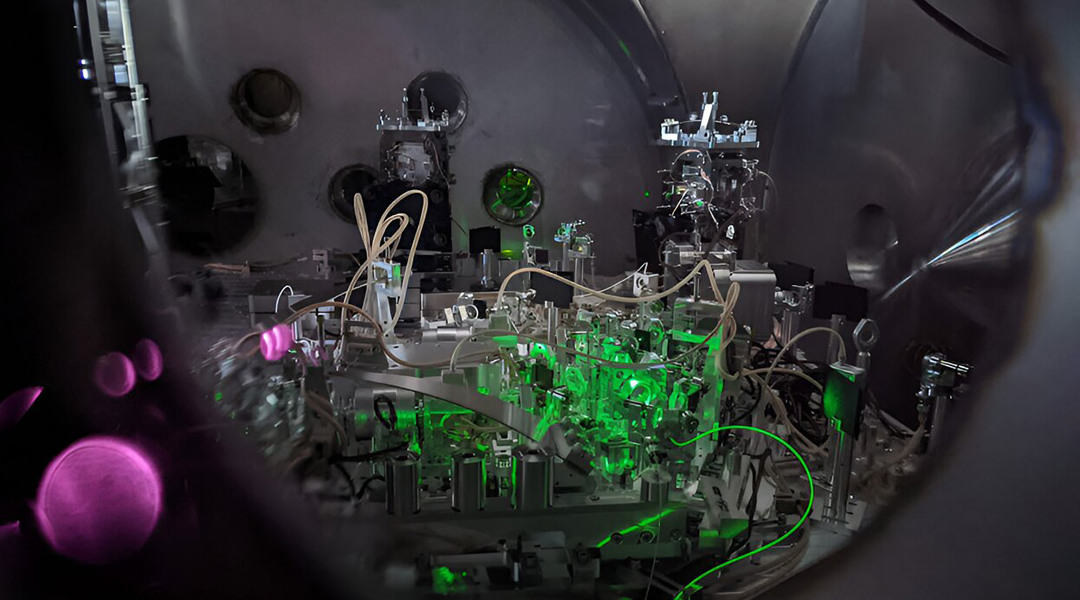An international team of physicists has proposed a method to deal with variations in the properties of particles at the quantum level known as quantum fluctuations, which reduce the sensitivity of gravitational interferometers — experimental facilities designed to detect gravitational waves generated by the merger of celestial bodies.
Gravitational waves are ripples in the fabric of spacetime caused by the acceleration of massive objects. When they pass through a region of space, they alter the distance between objects, making it possible to study elusive entities, such as black holes and neutron stars.
In modern gravitational observatories, such as the American LIGO and its European counterpart Virgo, laser beams are set up within these detectors to travel between massive mirrors floating in space.
When a gravitational wave generated somewhere in outer space passes through the observatory, the distance between the mirrors changes slightly and the beams get out of sync, which is registered by a special detector, signalling the passage of the wave.
Gravitational observatories are so sensitive that they are able to detect changes in the distance between their mirrors four orders of magnitude smaller than the size of an atomic nucleus. While impressive, at such tiny distances, quantum fluctuations come into play.
Taming the vacuum fluctuations
The greatest culprit causing this interference are known as “virtual particles”. In a vacuum, they are constantly born and disappear, causing temporary fluctuations in energy that appear spontaneously, according to the principles of quantum mechanics.
When these elusive particles hit the gravitational wave detector set up to measure the phase difference between the laser beams, they cause “noise” in the signal that makes it difficult to improve the accuracy of measurements and therefore detect mergers of black holes or neutron stars that are already so far away. The limit imposed on this measurement accuracy set by these fluctuations is called the quantum limit.
To break this limit, the team working on the LIGO detector modified the facility by adding an additional source of radiation, which enters the detector along with the laser beam and virtual particles. “We can’t control nature, but we can control our detectors,” said Lisa Barsotti, a senior research scientist at MIT and one of the main authors of a study accepted for publication in Physical Review X, in a press release.
The properties of this additional radiation, such as the phase of its waves, correlate with the properties of the laser beams, and when they hit the detector, subtle quantum interactions between the laser beam, the radiation, the virtual particles, and the detector itself reduce the noise caused by vacuum fluctuations, which improves the accuracy of the measurements.
“The quantum nature of the light creates the problem, but quantum physics also gives us the solution,” Barsotti said.
“It is true that we are doing this really cool quantum thing, but the real reason for this is that it’s the simplest way to improve LIGO’s sensitivity,” added Dhruva Ganapathy, a graduate student at MIT and one of the main authors of the new study. “Otherwise, we would have to turn up the laser, which has its own problems, or we would have to greatly increase the sizes of the mirrors, which would be expensive.”
Improved ability to detect faraway objects
According to the scientists, their technique will increase the number of detected merger events by almost 65%. “Now that we have surpassed this quantum limit, we can do a lot more astronomy,” said Lee McCuller, assistant professor of physics at Caltech and one of the leaders of the study.
With better noise mitigation, astrophysicists will be able to study the collisions of black holes that occurred in the early Universe, which have not yet been studied experimentally, as well as the structures of neutron stars in greater detail. “With more detections, we can watch the neutron stars rip each other apart and learn more about what’s inside,” said Ganapathy.
In addition to improving the accuracy of LIGO’s measurements, the team believes their method could also be used in other state-of-the-art gravitational wave detectors, such as Virgo, as well as larger future detectors, such as the Cosmic Explorer and Einstein Telescope, which are expected to deepen our understanding of the physics of the gravitational interaction and massive celestial bodies even further.
“We are finally taking advantage of our gravitational universe,” Barsotti said. “In the future, we can improve our sensitivity even more. I would like to see how far we can push it.”
In addition, the physicists expect the results of their study to be used in other fields where extreme precision or tiny distances are involved.
“The results also have ramifications for future quantum technologies such as quantum computers and other microelectronics as well as for fundamental physics experiments,” McCuller concluded. “We can take what we have learned from LIGO and apply it to problems that require measuring subatomic-scale distances with incredible accuracy.”
Reference: Dhruva Ganapathy, et al., Broadband quantum enhancement of the LIGO detectors with frequency-dependent squeezing, Physical Review X (2023). DOI: 10.1103/PhysRevX.13.041021
Feature image: An image from one of LIGO’s chamber’s viewports taken while the interference device was operational. Credit: Georgia Mansell/LIGO Hanford Observatory

















